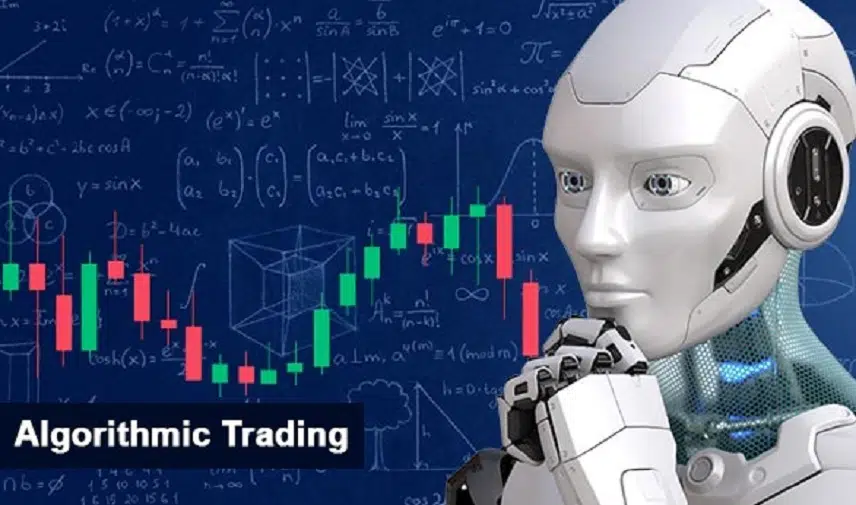Trade Execution With Algo Trading

Algorithmic trading, or algo trading, is a rapidly growing field in finance that utilizes computer algorithms to execute trades in financial markets. It involves using mathematical models and automated strategies to make trading decisions. This approach has gained popularity due to its ability to process large amounts of data, identify patterns and execute trades much faster than human traders.
This blog will explore the basics of algo trading, including its meaning, how it works, and its advantages and disadvantages. We will also discuss the benefits of using this approach, such as increased efficiency and reduced human error.
What is Algorithmic Trading?
Algorithmic trading is a type of trading that utilizes computer programs or algorithms to automate trade execution. In this approach, the algorithms are design to analyze large volumes of data, identify market trends and patterns, and execute trades based on predetermined parameters. Trade execution is automated, and the algorithms make decisions rather than human traders. The algorithms can be programmed to execute trades based on price movements, volume, and technical indicators. The goal of algo trading is to make faster and more accurate trades.
How Algo Trading Works?
Algo trading uses computer programs to execute trades automatically based on predefined rules or algorithms. The basic idea behind algorithmic trading is to use software to analyze large amounts of market data, identify patterns and trends, and then make trades based on those patterns faster than humans can do manually. Here’s a general overview of how algo trading works:
Strategy Development: First, the trader develops a trading strategy or algorithm. This involves identifying specific market conditions for which the algorithm should watch and defining the rules for entering and exiting trades. The strategy may be based on technical analysis, fundamental analysis, or a combination of both.
Data Collection: Once the strategy is defined, the trader collects market data that will be used to test and refine the algorithm. This can include historical price data, real-time market data, news feeds, and other relevant information.
Backtesting: The trader uses historical data to test the algorithm’s performance under market conditions. This helps to identify any weaknesses in the algorithm and refine it further.
Implementation: Once the algorithm is finalized, the trader programs it into software that automatically executes trades based on the predefined rules. The software may be hosted on the trader’s computer or a remote server.
Monitoring: The trader monitors the algorithm’s performance in real time, making any necessary adjustments based on market conditions or changes to the strategy.
Evaluation: The trader evaluates the algorithm’s performance over time, looking for ways to improve it and increase profitability.
Advantages of Algorithmic Trading
Algo trading has several advantages over traditional manual trading. One of the most significant benefits is speed. Algo trading software can process large amounts of market data and execute trades much faster than human traders can. This allows traders to take advantage of market opportunities as they arise, making it possible to enter and exit trades quickly and efficiently. Another advantage is accuracy. Algo trading reduces the risk of human error, which can be a significant factor in manual trading. The software is programme to follow specific rules, which can be backtested and refined to improve accuracy over time.
Additionally, Algo trading can run 24/7, so traders can take advantage of market opportunities even when they are not actively monitoring the markets. This can lead to increased profitability and reduced risk for traders. Overall, algo trading offers several benefits that make it an attractive option for traders looking to improve their market performance and efficiency.
Disadvantage of Algorithmic Trading
While algorithmic trading (Algo trading) offers several advantages, there are also disadvantages. One of the most significant risks associated with Algo trading is the potential for algorithmic errors. If there is a flaw in the code or an unexpected event occurs, the algorithm may make trades that are not in line with the trader’s strategy, leading to significant losses. Additionally, Algo trading may be subject to technical glitches or system failures that could disrupt trading operations. Another potential disadvantage is the need for more human intuition and judgment in algo trading. Algorithms are based on historical data and rules, which may not always capture the nuances of the market or unexpected events.
This could lead to missed opportunities or poor decision-making in certain market conditions. Finally, developing and maintaining Algo trading requires significant technical knowledge and expertise. This can be a barrier for some traders who may lack the skills or resources to implement Algo trading strategies effectively. Overall, while Algo trading offers many benefits, traders should be aware of the potential risks and drawbacks before implementing this approach to trading.
Conclusion
In conclusion, algo trading involves computer programs automatically executing trades based on predefined rules or algorithms. Algo trading offers several advantages over manual trading, including speed, accuracy, and the ability to run 24/7. However, disadvantages include the potential for algorithmic errors, lack of human intuition and judgment, and the need for technical knowledge and expertise. Choose a reliable trading platform that provides CFD trading and related services to retail and professional customers.